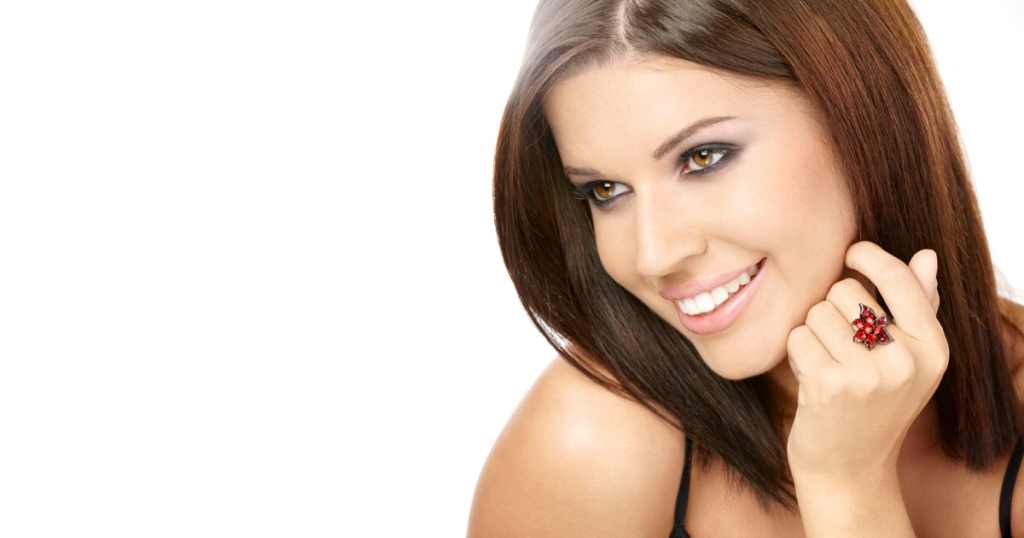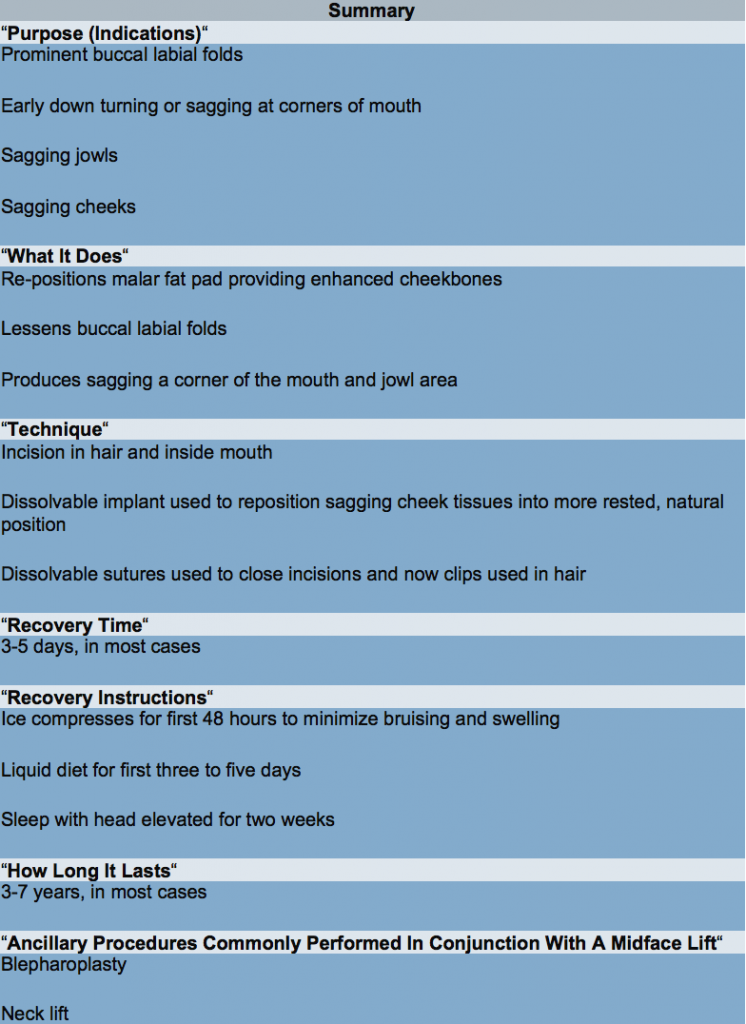
As we age, a pad of fibrous and adipose tissue over the cheekbone called the malar fat pad descends to a lower position in the cheek, and this results in a flattened cheek area and a deepening of the buccolabial fold. This is the fold that commonly runs from the corner of the nose to the corner of the mouth. The skin in this area is tightly adherent to the underlying facial muscles. As the malar pad in the cheek descends it results in a deepening of this fold and increased tissue redundancy in a jowl area.
Recently a new technique has been devised for a dissolvable implant that is inserted through the mouth and is secured to tissues behind the hairline in the temple area. This results in elevation of the malar pad and provides a more rested, youthful contour. This procedure tends to enhance the cheekbone area and can be used in cases for cheekbone implants (malar implants) which were required in the past. The advantages of the mid facelift is that we’re using your own tissues and repositioning the tissues to their previous more youthful position. The implant dissolves over a period of time while the reposition tissues heal into their proper position.
The advantage of the mid facelift is that there is minimal swelling and bruising. The procedure can be done under “twilight anesthesia” in less than an hour. Most patients are able to resume their normal activity within the next 1-3 days. While there can be some swelling and bruising, this is usually very minimal. This procedure works best in patients who have good elasticity to the tissues but have displayed early signs of aging and need to have tissues repositioned. Patients who have excess skin as well as sagging of the malar pad can have the mid facelift procedure performed in conjunction with a facelift to provide the maximum aesthetic enhancement. Because the incisions are not visible, this procedure is good for both men and women who have active lifestyles and who desire a very minimal convalescence.


Schedule a Consultation
Communication is not secure. Contacting the practice does not establish a physician/ patient relationship.*